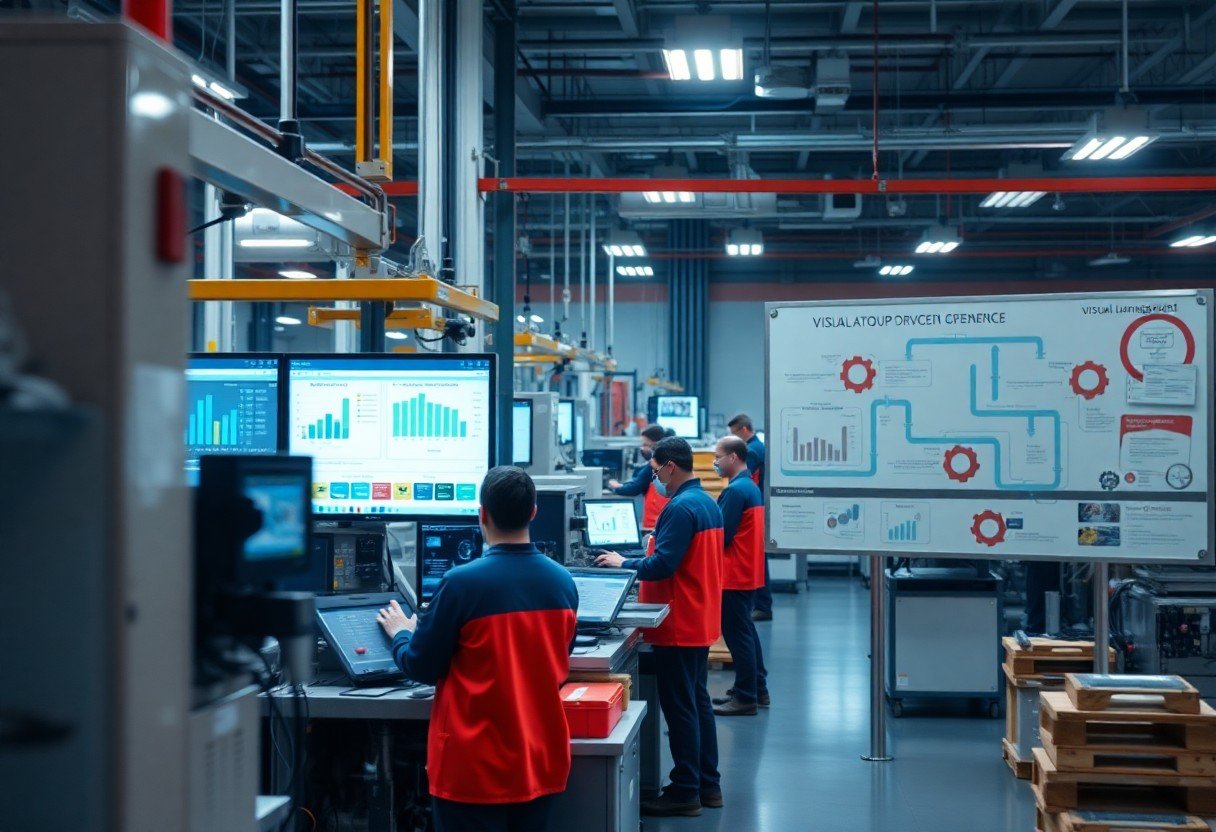You may believe that focusing solely on metrics is sufficient for continuous improvement, but this narrow perspective can limit your organization’s potential. Embracing a broader view that includes qualitative insights and contextual understanding allows you to identify patterns and signals that traditional metrics can overlook. By evolving your approach to continuous improvement, you empower yourself and your team to drive true transformation and sustainable growth.
Key Takeaways:
- Continuous improvement must incorporate qualitative insights alongside quantitative metrics to foster deeper understanding and effective decision-making.
- Engaging teams in the improvement process enhances ownership and trust, leading to sustainable change beyond mere number tracking.
- Adapting improvement strategies to align with evolving organizational goals and external conditions is vital for long-term relevance and success.
The Limitations of Traditional Metrics
Traditional metrics often fail to capture the full spectrum of performance and improvement within organizations. You might focus on numbers such as sales figures or employee turnover rates, but these metrics can obscure underlying issues. They may lead to surface-level improvements without addressing root causes. For deeper insights into enhancing continuous improvement strategies, explore The Importance of Continuous Improvement in Organizations.
Defining Key Performance Indicators
Key Performance Indicators (KPIs) serve as benchmarks for measuring success in various areas. You choose KPIs based on specific objectives, aligning them with your organization’s goals. However, rigid adherence to these indicators can limit your capacity for innovation and adaptation.
The Pitfalls of Overreliance on Numbers
Overemphasizing numbers can create a narrow view of performance, leading to misguided strategies. While data provides valuable insights, relying solely on numerical metrics may cause you to overlook qualitative factors vital for improvement.
Overreliance on numbers can result in a distorted perception of success. For instance, if employee satisfaction is measured purely through turnover rates, you might miss critical insights related to team morale or engagement. This fixation on quantitative data often leads organizations to prioritize short-term gains over long-term growth. By ignoring the qualitative aspects, you risk implementing strategies that are misaligned with what truly drives improvement within your team or organization.
Beyond Metrics: The Need for a Holistic Approach
Relying solely on metrics often overlooks the nuances of continuous improvement. To foster real advancement, you need a comprehensive perspective that includes understanding the contextual factors influencing performance. This holistic approach facilitates a deeper examination of processes, culture, and behaviors, enriching the data-driven insights that metrics provide.
Integrating Qualitative Insights
Incorporating qualitative insights enhances your understanding of team dynamics and customer experiences. Through interviews, focus groups, and feedback sessions, you uncover underlying issues not captured by numbers alone. This rich data complements quantitative measures, leading to more informed decision-making and targeted improvements.
Engaging Stakeholders in Continuous Improvement
Involving stakeholders transforms continuous improvement from a top-down mandate into a collaborative effort. Encouraging input from employees, customers, and partners cultivates a shared sense of ownership and accountability. This diverse perspective not only informs more effective solutions but also drives engagement and buy-in across the board. By maintaining open lines of communication, you ensure that improvements align with the needs and expectations of all involved.
The Role of Culture in Continuous Improvement
Cultural dynamics significantly influence your organization’s approach to continuous improvement. A culture that embraces change, fosters open communication, and encourages experimentation allows teams to adopt improvement initiatives more readily. When team members share a collective vision for enhancing processes, they become more engaged and motivated, leading to innovative solutions that drive success.
Fostering a Growth Mindset
A growth mindset enables you and your team to view challenges as opportunities for development rather than obstacles. By encouraging curiosity and promoting the belief that skills can be cultivated through dedication and effort, you create an environment where learning thrives. This mindset not only enhances individual capabilities but also strengthens collaborative problem-solving approaches.
Empowering Teams for Innovation
Empowering teams to take ownership of their processes leads to groundbreaking innovation. By decentralizing decision-making, you enhance team autonomy and accountability, resulting in quicker responses to challenges. This empowerment can be manifested through structured initiatives like innovation labs, where cross-functional teams come together to brainstorm and prototype ideas without the constraints of traditional hierarchies.
Empowering teams extends beyond just decision-making authority; it involves nurturing an environment where their insights and experiences shape innovations. Successful companies often create ‘innovation champions,’ individuals tasked with guiding teams through the process of ideation and implementation. For example, Google’s 20% time policy, which allows employees to spend a portion of their workweek on projects of their choice, has led to the creation of products like Gmail and AdSense. By fostering such an empowering atmosphere, you enable your employees to experiment, learn from failures, and drive continuous improvement.
Technologies Enabling Evolution
Data Analytics and AI
Leveraging data analytics and artificial intelligence transforms the continuous improvement landscape. You can analyze vast amounts of data to identify patterns and correlations that drive faster, data-driven decisions. Integrating AI algorithms allows for predictive modeling, enabling you to anticipate challenges and optimize processes proactively. For insights on key metrics for the future, check out 7 Key Continuous Improvement Metrics for 2025.
Real-time Feedback Loops
Implementing real-time feedback loops enhances your ability to adapt quickly. These systems collect data continuously, allowing for immediate insights and course corrections. As feedback becomes instantaneous, you can refine processes and make informed decisions on-the-fly, maintaining alignment with your goals.
Real-time feedback loops have proven effective in various sectors, including manufacturing and service industries. For instance, companies utilizing real-time dashboards can monitor operational performance and customer satisfaction simultaneously. By automating feedback collection and analysis, organizations reduce response times, fostering a culture of agility and responsiveness that enhances overall efficiency and effectiveness.
Case Studies: Organizations that Transformed Beyond Metrics
Several organizations have embraced the transition from a metrics-centric approach to comprehensive continuous improvement, demonstrating significant transformation and growth.
- Netflix: Shifted focus from viewership numbers to customer satisfaction, resulting in a 50% increase in customer retention.
- Toyota: Adopted a culture of kaizen, leading to a 30% reduction in production waste over five years.
- IBM: Transformed its service delivery model, achieving a 40% reduction in service times by prioritizing employee feedback and collaboration.
- Zappos: Focused on employee engagement over sales metrics, achieving a 75% increase in customer loyalty indicators.
- Google: Invested in employee satisfaction initiatives, resulting in a 20% increase in innovation metrics year-over-year.
Lessons from Industry Leaders
Industry leaders demonstrate that fostering a culture of continuous improvement requires more than tracking performance metrics. By emphasizing employee engagement and customer-centric values, these organizations achieve higher levels of innovation and operational efficiency.
Metrics vs. Meaningful Change
The distinction between mere metrics and meaningful change is fundamental to successful transformation. Metrics can provide useful data but do not capture the full scope of employee experience or customer satisfaction.
Meaningful change encompasses not just improvements in numbers but also shifts in culture and perspective. Organizations like Netflix and Toyota illustrate that by prioritizing human-centric approaches over rigid metrics, they foster deeper connections with customers and employees alike. This focus on meaning leads to sustainable improvements that resonate across all levels of the organization, ultimately driving enduring success beyond what simple metrics could indicate. The qualitative insights gleaned from such approaches often reveal transformative opportunities that numbers alone would never uncover.

Strategies for Implementing Continuous Improvement
Implementing continuous improvement requires a multifaceted approach that blends strategy, culture, and tools. You can begin by fostering an environment where feedback is valued, and innovation is encouraged. Engaging all levels of your organization in this process not only empowers employees but also leads to diverse ideas and solutions. Utilizing methods such as Lean, Six Sigma, or Kaizen can provide structured frameworks and tools tailored to your specific goals, ensuring a cohesive strategy for improvement.
Frameworks for Success
Frameworks like Lean, Agile, and Six Sigma offer structured methodologies to guide your continuous improvement journey. Utilizing Lean principles helps eliminate waste and enhance value delivery, while Agile promotes flexibility and rapid response to change. Six Sigma focuses on reducing variability and improving quality through data-driven decision-making. By selecting the right framework aligned with your organization’s objectives, you establish a solid foundation for sustainable improvement practices.
Monitoring and Adjusting Approaches
Your success with continuous improvement heavily relies on monitoring strategies and adjusting approaches based on real-time feedback. Setting up regular review intervals allows you to assess progress, identify obstacles, and pivot strategies as needed. Gathering input from your team through surveys or meetings can unveil hidden challenges and foster a culture of transparency and collaboration. Tracking key performance indicators (KPIs) enables informed adjustments, ensuring that you remain aligned with your overarching objectives.
Monitoring and adjusting your approaches is not a one-time effort but an ongoing commitment. By establishing clear KPIs, you can evaluate which improvement efforts yield the best results. For example, businesses often adopt weekly or monthly review cycles to assess trends and make data-informed adjustments. Engaging with cross-functional teams during this process can illuminate overlooked issues and generate innovative ideas. Companies that prioritize this iterative evaluation not only enhance their adaptability but also cultivate a responsive culture committed to sustained improvement.
Summing up
Considering all points, you must recognize that continuous improvement cannot solely rely on metrics; it requires a more holistic approach. By embracing a culture that prioritizes adaptability and innovation, you can foster an environment where feedback and learning drive growth. Understanding the limitations of traditional indicators will enable you to implement more effective strategies, ensuring your organization remains relevant and responsive to changes. Ultimately, evolving beyond metrics empowers you to leverage insights that can lead to lasting success.
FAQ
Q: What is the main premise of ‘The Signal Advantage’?
A: The main premise of ‘The Signal Advantage’ is that organizations must move beyond traditional metrics to effectively foster continuous improvement. It argues that relying solely on numeric performance indicators can obscure deeper insights and hinder genuine progress.
Q: How can organizations implement the principles from ‘The Signal Advantage’?
A: Organizations can implement the principles by integrating qualitative feedback and contextual analysis alongside quantitative measures. This involves fostering a culture of open communication, utilizing diverse data sources, and encouraging collaboration across teams to uncover underlying issues and promote innovative solutions.
Q: What are the potential benefits of evolving continuous improvement practices as described in the book?
A: Evolving continuous improvement practices can lead to enhanced decision-making, increased employee engagement, and more sustainable growth. By focusing on signals rather than mere numbers, organizations can identify root causes of problems, adapt more swiftly to changes, and ultimately create a more resilient and agile business environment.

No responses yet